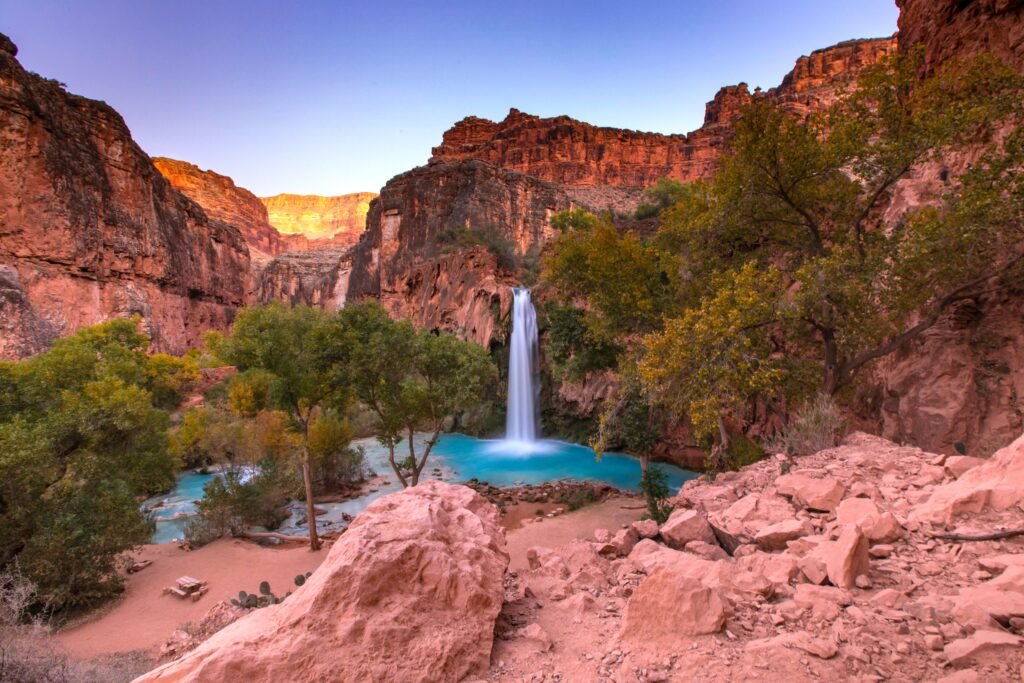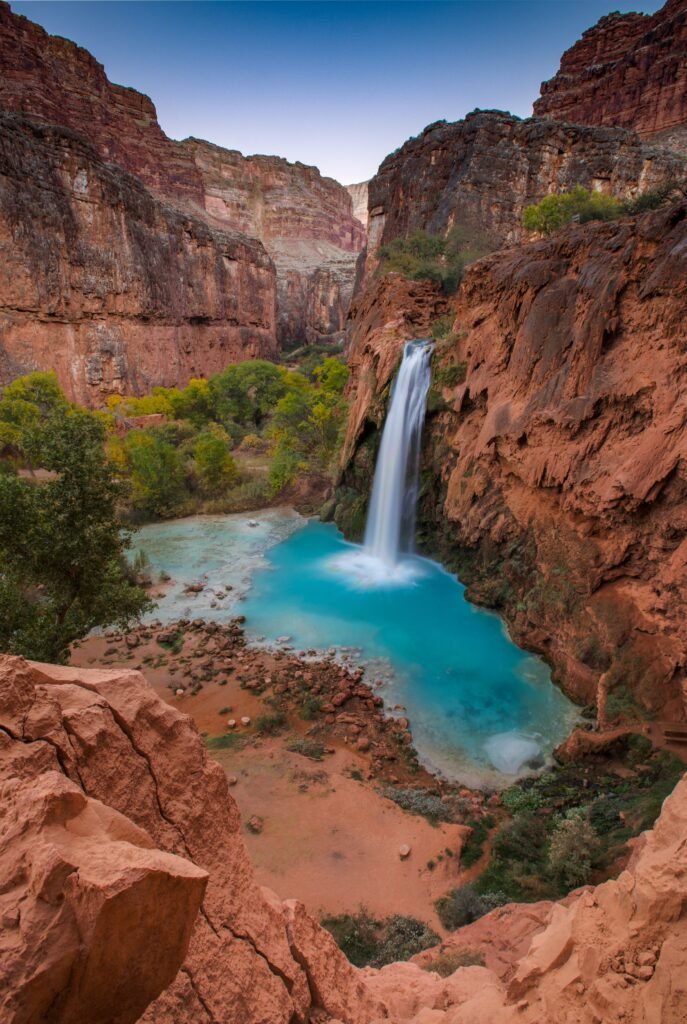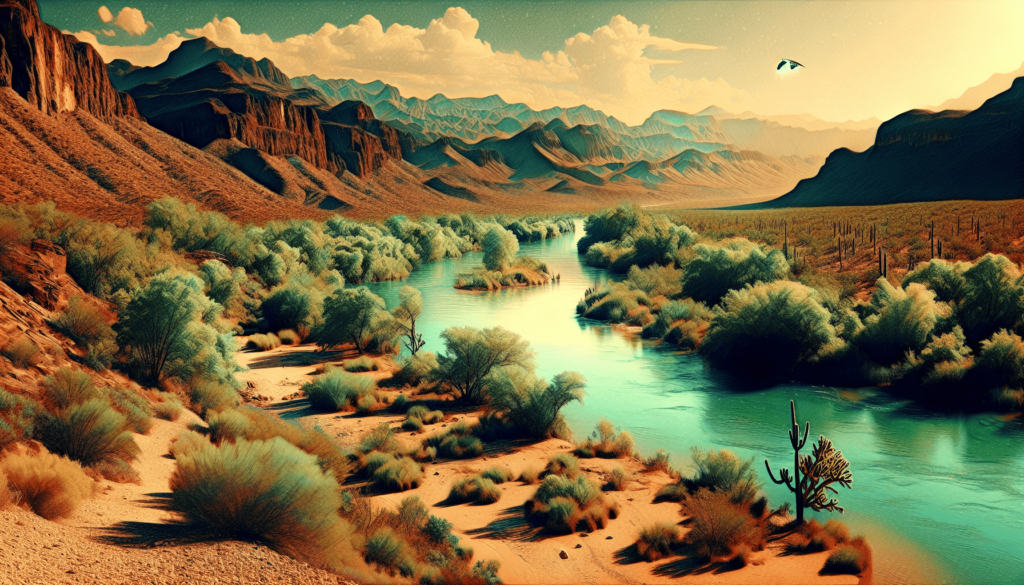Imagine having the opportunity to immerse yourself in the majestic beauty of the Havasu National Wildlife Refuge in Arizona. This hidden gem boasts a breathtaking landscape that serves as a sanctuary for a diverse array of wildlife. From the brilliant blue waters to the vibrant bird species that call this place home, your adventure here promises to be nothing short of magical. As you set out to explore the serene trails and the lush, verdant spaces, you’ll find that every corner of the Havasu National Wildlife Refuge whispers the age-old tales of the natural world, inviting you to be a part of its ever-unfolding story. Exploring Havasu National Wildlife Refuge in Arizona
Overview of Havasu National Wildlife Refuge
Geographic location and size
Nestled along the Colorado River, Havasu National Wildlife Refuge straddles the border between Arizona and California. This vast sanctuary covers a significant area, offering a blend of desert, wetland, and aquatic ecosystems. Its unique geographic placement makes it a critical habitat for various wildlife species and a fascinating spot for nature enthusiasts.
History and establishment of the refuge
The Havasu National Wildlife Refuge was established to provide a safe haven for wildlife, especially migratory birds, who traverse the Pacific Flyway. Its history is a testament to the enduring efforts to conserve nature and protect the intrinsic value of biodiversity.
Importance of the refuge to wildlife conservation
As a critical part of the region’s ecological fabric, the refuge plays a vital role in wildlife conservation. It serves as a breeding ground, a feeding stopover, and a wintering site for many species, making it indispensable for maintaining biological diversity and ecological health in the area.
Habitats Within Havasu National Wildlife Refuge
Riparian zones along the Colorado River
The riparian zones lining the Colorado River form lush corridors of vegetation that are crucial for wildlife. These areas offer a stark contrast to the surrounding desert landscape, providing essential resources for species survival.
Desert uplands
The desert uplands in Havasu National Wildlife Refuge present a rugged but beautiful landscape that supports a unique set of flora and fauna adapted to the arid conditions. This habitat is as challenging as it is vital for the survival of many desert species.
Wetlands and marshes
The wetlands and marshes create a mosaic of moisture-rich habitats within the refuge. These areas are particularly important for amphibian and fish species, serving as nurseries for young and a haven for numerous waterfowl.
Aquatic habitats
Aquatic habitats, including the mighty Colorado River and various smaller water bodies, are central to the life in Havasu National Wildlife Refuge. They support a diverse range of species and play a crucial role in the ecological dynamics of the refuge.

This image is property of images.pexels.com.
Wildlife of Havasu National Wildlife Refuge
Endangered and threatened species
The refuge is a critical habitat for several endangered and threatened species, providing protections that are key to their survival and recovery. Efforts within the refuge aim at conserving these species and their habitats.
Bird species
Bird enthusiasts will find Havasu National Wildlife Refuge a paradise, thanks to its role as a vital stopover for migratory birds. From waterfowl to songbirds, the variety of bird species here is astounding.
Mammals
The refuge is home to a range of mammals, from the elusive bobcat to the industrious beaver. These mammals play essential roles in the ecosystem, acting as predators, prey, and ecosystem engineers.
Reptiles and amphibians
Reptiles and amphibians thrive in the diverse habitats of the refuge, from its sun-baked deserts to its cool, wet marshes. These creatures, often hidden, are integral to the ecological balance.
Fish species
The aquatic ecosystems within Havasu National Wildlife Refuge support an array of fish species. These waters provide critical spawning and nursery habitats, supporting both native and sport fish populations.
Plant Life in Havasu National Wildlife Refuge
Native plants
The native plants of the refuge have adapted to its varied habitats, from the riparian zones to the desert uplands. These plants not only survive but thrive, providing food, shelter, and nesting materials for wildlife.
Invasive species management
The refuge actively manages invasive species to protect its native biodiversity. These efforts are crucial in maintaining the health of the habitats and the diversity of life they support.
Riparian vegetation
The lush riparian vegetation along the Colorado River is a vital part of the refuge. This foliage offers critical habitat and resources for countless wildlife species, underlining the importance of preserving these areas.

This image is property of images.pexels.com.
Recreational Activities in Havasu National Wildlife Refuge
Birdwatching
With its rich diversity of bird species, birdwatching is a popular activity in the refuge. The varying landscapes offer unique opportunities to observe a wide range of birds throughout the year.
Hiking trails
The refuge’s hiking trails offer a way to explore its diverse landscapes and get up close with its flora and fauna. These trails range from easy walks to more challenging hikes, catering to all levels of enthusiasts.
Boating and kayaking
Exploring the waterways of Havasu National Wildlife Refuge by boat or kayak is a fantastic way to see the area. This perspective allows you to access remote areas and enjoy the aquatic environments up close.
Fishing opportunities
Fishing is a beloved activity in the refuge, with its rich aquatic habitats offering excellent spots for both casual and sport fishing. Regulations are in place to ensure sustainable fishing practices.
Photography
The breathtaking landscapes and abundant wildlife make the refuge a photographer’s haven. From landscape shots to wildlife photography, there are endless opportunities to capture the beauty of this area.
Conservation Efforts in Havasu National Wildlife Refuge
Wildlife management
The refuge implements various wildlife management strategies to maintain healthy populations and ecosystems. These efforts include habitat restoration, species monitoring, and specific initiatives for endangered species.
Habitat restoration projects
Habitat restoration is a key focus within the refuge, aiming to recover areas that have been degraded or altered. These projects not only benefit the wildlife but also enhance the overall health of the environment.
Public education and outreach
Education and outreach programs are vital in raising awareness about the importance of wildlife conservation. The refuge engages the public through events, workshops, and educational materials.
Research and monitoring
Ongoing research and monitoring are crucial for informed conservation efforts. These activities help understand the dynamics within the refuge and guide management decisions.

Visitor Information for Havasu National Wildlife Refuge
Best times to visit
While the refuge is welcoming year-round, visiting during the cooler months or early mornings during summer can enhance your experience. Spring and fall are particularly magical, with migratory birds visiting and pleasant weather.
Visitor center amenities
The visitor center offers resources to help plan your visit, including maps, educational displays, and staff to answer questions. It’s a great starting point to learn more about the refuge.
Rules and regulations for visitors
Adherence to the refuge’s rules and regulations is essential for preserving its natural beauty and wildlife. These include guidelines on staying on trails, respecting wildlife, and following fishing regulations.
Accessibility and safety tips
Some areas of the refuge are more accessible than others. Visitors should prepare for their activities by checking trail conditions, weather forecasts, and ensuring they have adequate supplies and safety equipment.
Volunteer and Community Involvement
Volunteer opportunities
Volunteering at the refuge is a rewarding way to contribute to conservation efforts and learn about wildlife and habitats. Opportunities range from habitat restoration projects to educational outreach.
Educational programs
The refuge offers educational programs aimed at schools and the general public. These programs are designed to foster an understanding and appreciation of the natural world and conservation issues.
Community collaboration
The refuge collaborates with local communities, organizations, and other stakeholders to promote conservation. These partnerships are crucial for achieving broader ecological goals and engaging the public in conservation efforts.
Events and workshops
Regular events and workshops provide hands-on learning experiences about nature, wildlife, and conservation practices. These activities are designed for all ages and offer great ways to get involved and learn more about the refuge.

Challenges Facing Havasu National Wildlife Refuge
Climate change impacts
Climate change poses a significant challenge to the refuge, affecting water availability, altering habitats, and impacting wildlife. Addressing these impacts requires adaptive management strategies and ongoing research.
Water management issues
Water management is crucial for the refuge’s ecosystems, especially in the arid Southwest. Balancing the needs of wildlife with those of human populations and agriculture requires careful planning and collaboration.
Invasive species
Invasive species threaten the native biodiversity of the refuge, competing with native species for resources. Managing these invasives is an ongoing effort that is critical for the health of the refuge’s ecosystems.
Funding and resource allocation
Securing adequate funding and resources is a constant challenge. These are essential for conservation work, habitat restoration, and managing visitor facilities. Support from the public, through visitation, volunteerism, and advocacy, is vital.
Travel Tips and Planning Your Visit to Havasu National Wildlife Refuge
Accommodations near the refuge
A range of accommodations can be found near the refuge, from campgrounds to hotels. Planning ahead will ensure you find a place that meets your needs and allows you to maximize your time in the area.
Packing essentials for outdoor activities
When preparing for outdoor activities in the refuge, pack essentials such as water, sunscreen, hats, and appropriate footwear. Remember to bring binoculars for birdwatching and a camera to capture the memories.
Respectful wildlife viewing practices
Observing wildlife is one of the joys of visiting the refuge. It’s important to do so responsibly, keeping a safe distance, not feeding wildlife, and respecting their natural behaviors.
Using the refuge’s map and resources for navigation
Familiarize yourself with the refuge’s map and resources before your visit. This preparation will help you navigate the area more effectively, ensuring a safe and enjoyable experience.
Havasu National Wildlife Refuge offers a unique blend of natural beauty, wildlife diversity, and recreational opportunities. Whether you’re a seasoned naturalist or a casual visitor, the refuge invites you to explore its wonders and contribute to its conservation. Your visit, mindfulness, and involvement not only enrich your life but also support the enduring legacy of this precious natural oasis.

